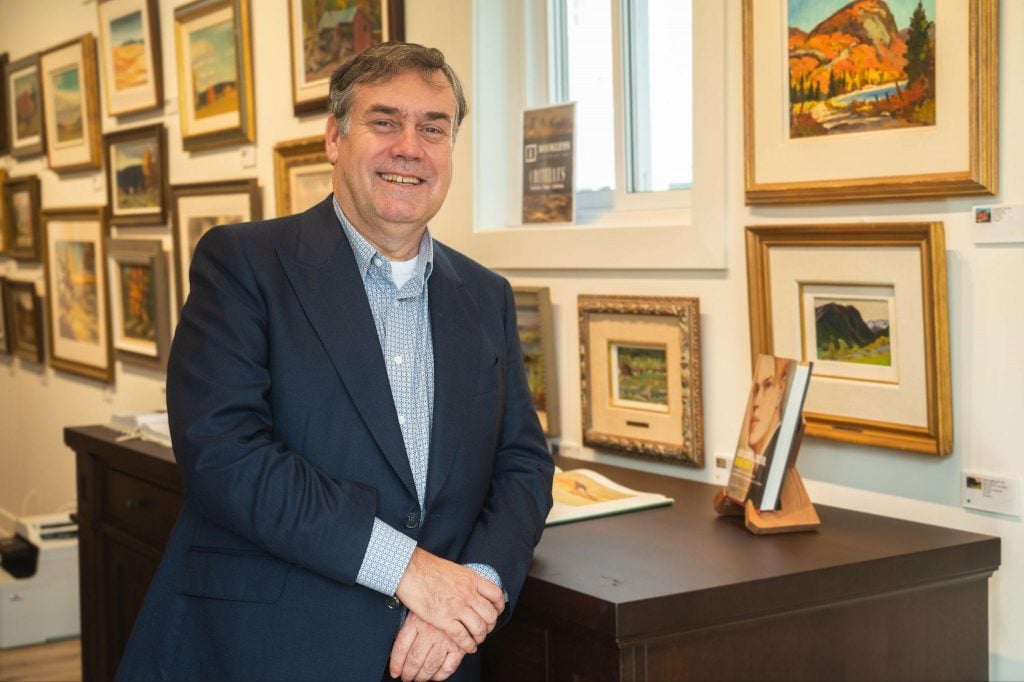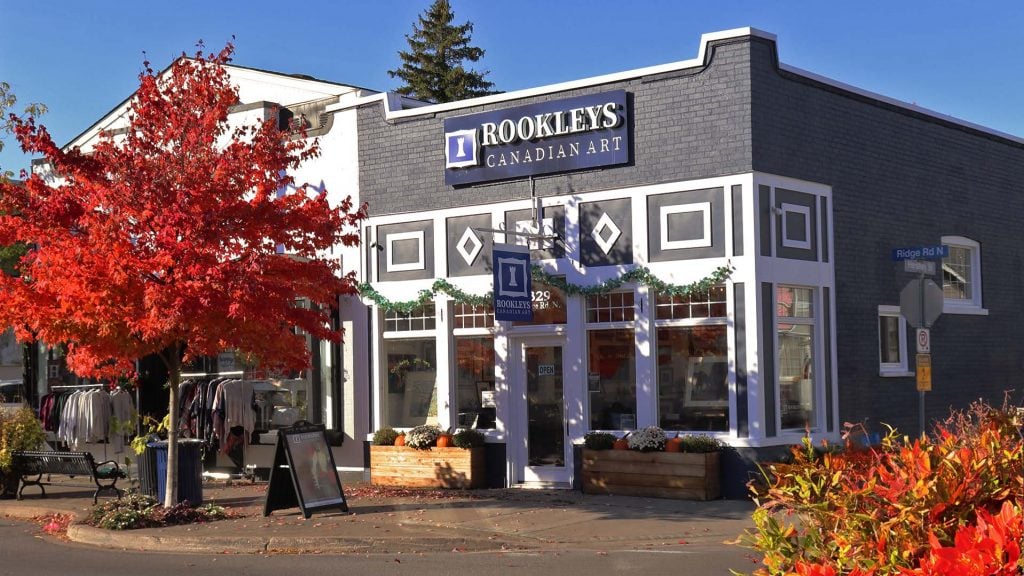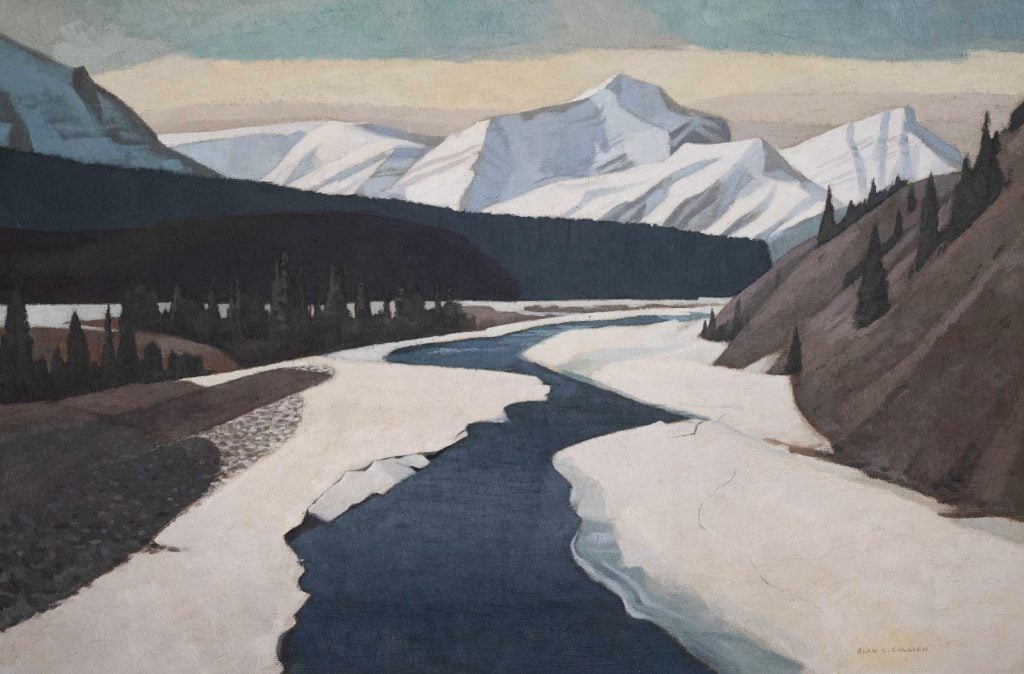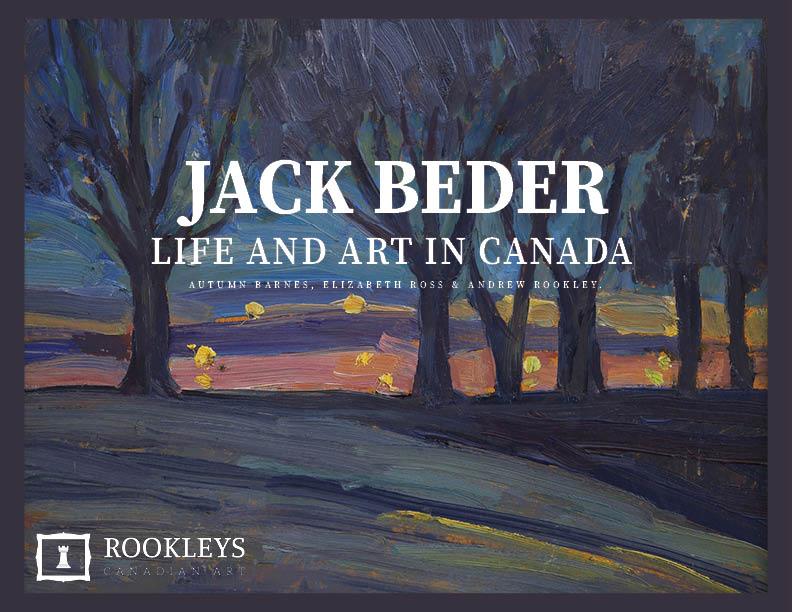Gallery Network
7 Questions for Dealer Andrew Rookley on Championing Canada’s Art Scene
Based in Ridgeway, Ontario, Rookleys maintains an extensive collection that illustrates the history of Canadian art.

Based in Ridgeway, Ontario, Rookleys maintains an extensive collection that illustrates the history of Canadian art.

Artnet Gallery Network

Located in the picturesque town of Ridgeway, Ontario, Rookleys Canadian Art offers a premier range of important Canadian artworks by both household names and lesser-known artists whose work is being rediscovered and reappraised. Established by Andrew Rookley, the family-owned and operated gallery provides an unparalleled collecting experience for clients. Nestled in the Niagara region away from the bustle of traditional art hubs like Toronto or Montreal, the gallery itself is set against the same Canadian backdrop as the works it offers often depict.
Built on an impeccable and extensive collection of Canadian art, including works by Group of Seven artists, and a commitment to fostering and promoting local and regional artists as well as strong relationships with collectors, Rookleys stands apart for its holistic approach. We reached out to Rookley to learn more about how and why he set out to found his eponymous gallery, and what’s next on the horizon for Rookleys Canadian Art.

Courtesy Rookleys Canadian Art, Ridgeway.
Can you tell us a bit about your background and what led you to establish Rookleys Canadian Art?
I was a teacher in Toronto in my twenties through my mid-thirties. Getting married and starting a family motivated me to become a good provider, so I wrote a computer program that gave me the resources to simultaneously build two nice homes.
My interest in art began with a practical need to fill the walls of these houses. After I had all the art I needed for decoration, I loved collecting paintings so much that I did not want to stop.
As my collection grew into several hundreds of pieces, I started visualizing a great life for future generations of Rookleys. I couldn’t think of a better family business than operating an art gallery. My wife does the purchasing and shipping while my 14-year-old son is as passionate about art as I am and is already a big part of the gallery as our photographer.
How would you describe the gallery’s ethos or mission?
Being so close to my grandparents gave me a deep affinity with previous generations of Canadians. It gratifies me when people come into the gallery and feel a connection to our past. The artists in this gallery lived lives that are truly worth spending time thinking about. I’m proud to be a caretaker of these artist’s legacies. If you allow yourself, you can feel a part of the painter’s soul in each piece. Our mission is to sell paintings that resonate with people and that they can feel good about purchasing.

A.Y. Jackson, Laurentian Winter (ca. 1930). Courtesy of Rookleys Canadian Art, Ridgeway.
Does the locale of Ridgeway, Ontario, influence or inform how you run Rookleys?
Working in Ridgeway is a delight. I start my day with a nice 10-minute drive from the beach and arrive at the gallery stress-free. There are no traffic jams, tent cities, or nasty graffiti to look at.
We can say with confidence that when visitors come here, they will have an enjoyable experience. They don’t have to worry about parking, they’ll see happy faces, and they’ll be greeted warmly.
We know that most people are unfamiliar with Ridgeway and that just increases our David vs. Goliath mentality. It pushes us to work harder to be better than the well-established galleries that operate in familiar locations. To compete, we have to have the best selection, photography, videos, website, and overall customer service.
Ridgeway is a part of Fort Erie, which borders Buffalo, New York. We are very grateful for the higher American traffic we receive compared to a typical Canadian art gallery.
The other benefit of being in Ridgeway is that we don’t have the outrageous rent or property taxes that Toronto galleries pay. Our customers benefit from our lower overhead costs.
What is something you’d like people to know about the Canadian art scene or its history who are unfamiliar with it?
The stereotype of Canadians is that we are very polite. Our historic art absolutely reflects that with its goal to bring happiness rather than to provoke.
Our other reputation is that we live in a cold and harsh climate. This was clearly depicted by our most famous painters, the Group of Seven who operated from 1920 to 1933. Their Canadian school of art had a profound impact on the generations that followed.
Due to our inferiority complex, Canadian art is truly under-appreciated and therefore grossly undervalued. Group of Seven paintings can be purchased for tens of thousands of dollars. Americans of equivalent national fame sell for ten or one hundred times that. One of our missions is to close that gap.
How does being a collector yourself affect the way you either approach helming the gallery or connecting with other collectors?
As a collector, what I want most out of a gallery is for them to work hard to increase the value of the artists they sell and the paintings I’ve purchased in particular.
As a gallery owner, I am always very happy to follow up with a client by letting them know there is an opportunity to sell one of their paintings they bought from us for a profit. If after five or 10 years, their purchases haven’t increased substantially in value, then I have let them down because that is one of my major responsibilities. The way that my customers have the assurance that I am on their side is that I have skin in the game. The artists I sell make up a substantial part of my family’s net worth.

Allan Collier, March Flows Into April (1982). Courtesy of Rookleys Canadian Art, Ridgeway.
Can you tell us about an artist, artwork, or art movement that you are currently fascinated by?
I spend a great deal of my time analyzing which Canadian artists have not received proper recognition for their life’s work. There are a number that come to mind, but the one that really stands out to me is Alan Collier. There are well over one hundred boxes of his life stored at Queen’s University that have barely been touched. The only book written about him was a social history text rather than one that showcased his art—and this must change. We have made a commitment to his estate to publish a book using his extensive journals, calendars, diaries, photos, and dozens of other types of resources.

Courtesy of Rookleys Canadian Art, Ridgeway.
Are there any projects on the horizon or forthcoming exhibitions that you can share with us?
On a weekly basis, we are making original videos on our artists. Our book on Jack Beder is in the can and our next book on local legend, David Drum, is well underway.
It’s stunning that Niagara Falls, Ontario, which receives over 12 million tourists a year, has never catered to the fine art market. In the long term, we are dedicated to working with cultural and tourism partners to put on an exhibition that celebrates Canada and introduces the world to some of our greatest artists. We’ve begun networking to bring this about and are very excited at this early stage.
Learn more about Rookleys Canadian Art here.
